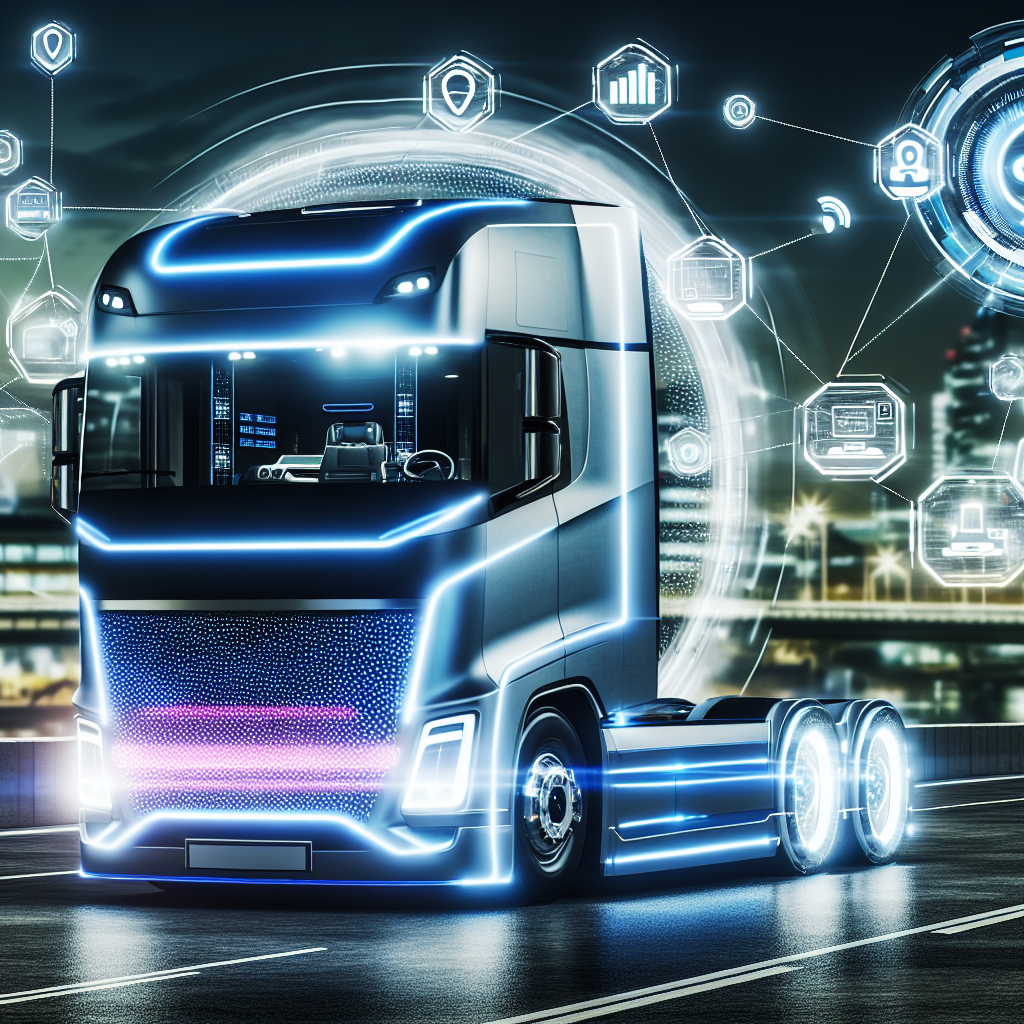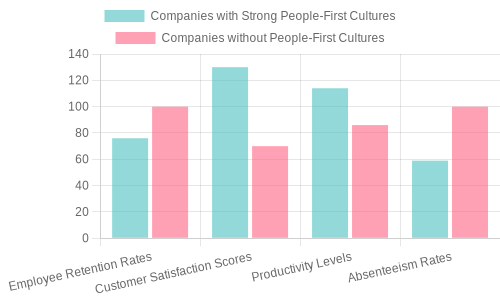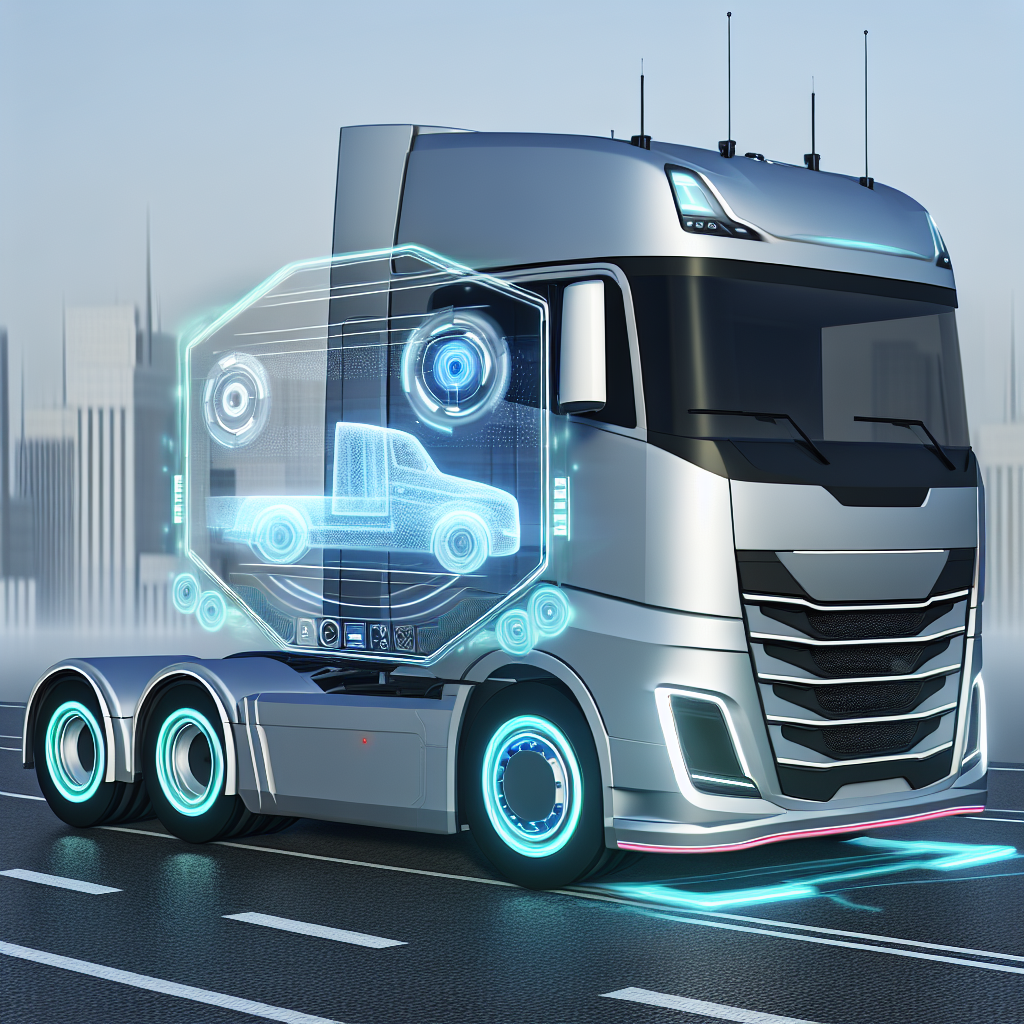In today’s fast-paced trucking industry, the tension between embracing digital innovation and nurturing a dedicated workforce is palpable. Companies find themselves at a critical juncture where the latest technologies promise efficiency and growth, yet the importance of people-first strategies in trucking cannot be overlooked. With over 30% of customers still preferring personal communication over digital channels, it becomes clear that technology should support, rather than replace, human interaction.
This article explores how striking the right balance between investing in cutting-edge tools and fostering the talents of the workforce is not only strategic but essential for sustainable success. We will delve into the insights shared by industry executives, the significance of training, and how a culture of engagement shapes the future of trucking fleets.

The Need for a People-First Approach
A people-first approach is crucial for success in the trucking industry. While digital communication is becoming more common, many customers still prefer traditional methods. For example, over 30% of customers choose to make service inquiries via phone. A 2025 YouGov survey shows that while 70% of Americans use phone support, only 35% actually prefer it. This creates a challenge: how to satisfy different customer communication preferences while adopting digital tools.
Industry leaders emphasize the importance of prioritizing people. This approach builds trust and boosts satisfaction among workers. Joyce Brenny, CEO of Brenny Logistics, sums it up well:
“People come first, and profit comes second.”
Her focus on driver well-being highlights the value of a supportive environment, a belief shared by many in the industry.
David Kelly, president of Innocon, highlights the need to balance digital tools with personal interaction. He notes that,
“Some just don’t want to use digital tools.”
This underlines the fact that even with technology’s benefits, the human touch remains vital for many customers.
Executives like Rhett Roberson and Lance Craig stress the importance of open communication and trust in their companies. Roberson believes that safety, engagement, and dialogue depend on creating a trustworthy work culture where drivers feel encouraged to share their thoughts. Craig shows how placing top sales staff in driver recruitment reinforces the critical role of people in operations and relationships that drive the business forward.
By focusing on a people-first approach, companies not only improve employee morale but also foster stronger customer relationships. With ongoing varied communication preferences, trucking firms that prioritize employee engagement and welfare are better positioned to succeed in a competitive market. Investing in people, along with digital tools, leads to sustainable success.
| Digital Tools | People-First Strategies | Benefits |
|---|---|---|
| Fleet management software | Employee training programs | Enhanced operational efficiency and employee skill development |
| GPS tracking systems | Open communication channels | Improved transparency and trust within the workforce |
| Automated dispatch systems | Regular feedback sessions | Increased employee engagement and satisfaction |
| Digital onboarding platforms | Mentorship initiatives | Faster integration of new hires and stronger workplace relationships |
| Telematics for performance monitoring | Wellness programs | Healthier employees and reduced absenteeism |
| Customer relationship management tools | Community-building activities | Stronger company culture and loyalty to the organization |
| Mobile applications for drivers | Flexibility in work hours | Higher job satisfaction and retention rates |
Training Innovations in the Trucking Industry
The trucking industry is increasingly adopting innovative training technologies, notably Virtual Reality (VR) and automation, to enhance training efficiency and employee engagement.
Current Innovations in Training Technologies:
- Virtual Reality (VR): VR creates immersive, interactive environments where trainees can practice real-world scenarios without actual risks. This method is particularly effective for complex procedures and emergency responses.
- Augmented Reality (AR): AR overlays digital information onto the physical world, assisting in tasks like equipment maintenance and repair. For instance, Daimler Trucks North America (DTNA) is exploring AR to reduce repair times and enhance technician training.
- Automation and AI: These technologies personalize training experiences, adapt to individual learning paces, and provide real-time feedback, leading to more efficient skill acquisition.
Advantages of VR and Automation in Training:
- Enhanced Safety: VR allows trainees to experience hazardous situations in a controlled environment, leading to a 70% reduction in workplace injuries compared to traditional methods.
- Improved Knowledge Retention: VR training has been shown to produce 75% higher retention rates than conventional training, ensuring that employees retain and apply their learning effectively.
- Accelerated Skill Development: The immersive nature of VR enables employees to master complex systems and workflows 40% faster than traditional training methods.
Impact on Training Times and Employee Engagement:
- Reduced Training Time: Companies like UPS have implemented VR in driver training, reducing training time from 8 hours to just 2 hours while maintaining high-quality standards.
- Increased Employee Engagement: The interactive and immersive aspects of VR training lead to higher engagement levels. For example, Pixo VR reported a 100% increase in engagement among employees participating in VR training compared to previous methods.
- Higher Retention Rates: Walmart’s use of VR training resulted in a 15% boost in employee retention rates, indicating that employees are more likely to stay with the company after engaging in innovative training programs.
In summary, integrating VR and automation into trucking industry training programs offers substantial benefits, including enhanced safety, improved knowledge retention, faster skill development, and increased employee engagement and retention.

Insights from Industry Executives
In a landscape that increasingly emphasizes digital innovation, trucking executives are vocal about the necessity of a balanced approach that prioritizes both technology and workforce development. Insights from industry leaders such as David Kelly and Jason Belgrave reveal the pressing need for trucking companies to adapt their strategies effectively.
David Kelly, President of Innocon, shared his perspective at the “Bridging the Barriers” event, stressing the importance of meeting customer preferences. He remarked, “Some just don’t want to use digital tools,” highlighting the reality that a significant portion of customers still prefers personal communication. This emphasizes that while embracing digital solutions can enhance efficiency, the human element remains vital for maintaining customer satisfaction. Furthermore, Kelly discussed Innocon’s commitment to workforce development, noting the effectiveness of their cross-training program, which not only prepares employees for leadership roles but also boosts morale. By providing pathways for advancement, companies can better engage younger workers who seek meaningful career opportunities.
Jason Belgrave, Director of Operations at Purolator, echoed these sentiments by addressing the challenges posed by absenteeism and the inconsistencies in peer-to-peer training. He stated, “It’s really about redeploying people into higher-value work,” indicating that automation should not simply result in cost-cutting but rather enable employees to focus on more impactful roles. Belgrave’s use of virtual reality for training exemplifies a proactive approach to workforce adaptation, allowing new hires to gain critical insights before they engage in hands-on work.
Both executives emphasize that incorporating these insights into strategic planning is essential for fostering a resilient workforce. Adapting workforce strategies enhances not only operational efficiency but also employee satisfaction and retention, creating a sustainable model for the future of trucking.
Conclusion
In conclusion, balancing digital innovation with a robust investment in workforce strategies is essential for the long-term success of trucking fleets. As the industry continues to evolve, the integration of advanced technologies such as fleet management software and automation must be complemented by a strong commitment to people-first initiatives. Executives across the sector have made it clear that while digital tools can enhance operational efficiency, prioritizing employee engagement and development is paramount.
Moreover, the necessity of catering to diverse customer preferences for communication methods underscores the importance of the human touch in a rapidly digitizing environment. Embracing innovation does not mean sidelining the workforce; rather, it invokes an opportunity to redefine roles, enhance training, and foster a culture of collaboration and trust. Insights from industry leaders remind us that investing in people leads to a sustainable competitive advantage, enabling trucking companies to meet the ever-changing demands of the market.
Key findings from the research support the critical role that a people-first approach plays:
- Enhanced Company Culture and Employee Engagement: A positive company culture is crucial, as evidenced by recent reports emphasizing the need for recognition and support. A trucking culture that values drivers leads to higher retention and satisfaction.
- Improved Employee Retention: Organizations prioritizing employee well-being experience significantly higher retention rates. Structured onboarding processes have proven essential in maintaining talent within trucking firms.
- Increased Customer Satisfaction: A people-first culture enhances customer experience, creating a direct correlation between engaged employees and satisfied customers, indicating strong profitability.
- Financial Performance: Companies that actively listen to employee feedback and incorporate it into their strategies are rewarded with better financial outcomes, further underscoring the importance of a people-first mindset.
By combining state-of-the-art technologies with a firm dedication to staff development and well-being, fleets can thrive in the face of challenges. The outcome is not just a prosperous future for the companies themselves but also for their employees and customers alike, creating a robust ecosystem within the trucking industry.
Generational Shifts in Workforce Expectations
The trucking industry is experiencing generational shifts in workforce expectations, much like other sectors. Younger generations, such as Millennials and Gen Z, value work-life balance, meaningful engagement, and opportunities for growth. They seek not only competitive compensation but also a positive work culture that emphasizes collaboration, purpose, and well-being. In this context, approaches like cross-training and thorough onboarding are vital because they align with contemporary trends that engage and retain employees.
Cross-training allows for flexibility in job roles, enabling employees to feel more invested in their work as they can contribute across various areas. This method exposes employees to different aspects of the business, fostering a greater sense of belonging and increasing job satisfaction. Furthermore, effective onboarding that includes mentorship and hands-on experiences helps cultivate relationships and a sense of community from the start. Providing new hires with clear paths for advancement can significantly boost engagement, especially among Millennials and Gen Z, who prioritize professional development.
The emphasis on incorporating technology does not overshadow the need for personal connections. Employers must adapt to maintain a harmonious balance where digital tools support training and development while ensuring that interpersonal relationships thrive. Ultimately, the trucking industry must embrace these generational shifts to attract and keep a skilled workforce.
Employee Absenteeism Statistics in the Trucking Industry
- Causes of Absenteeism:
- Low driver morale due to inadequate compensation, lack of management support, and insufficient recognition.
- Health-related issues, including stress and long hours, contributing significantly to absences.
- General dissatisfaction with work conditions which exacerbates absenteeism rates.
- Impact on Productivity and Costs:
- Decreased productivity resulting in disrupted operations and delays in delivery times.
- Financial losses attributed to absenteeism are estimated at $3,600 annually per hourly worker, stemming from wage payments to absent workers, overtime costs, and related administrative expenses.
- Strategies for Mitigating Absenteeism through Workforce Engagement:
- Enhancing driver morale through better communication, ergonomic vehicle provisions, and the use of technology to alleviate job demands.
- Utilizing dedicated communication platforms that engage and connect drivers, reducing feelings of isolation.
- Implementing recognition and reward programs to acknowledge outstanding performance, fostering a positive work environment and increasing employee retention.

This graph illustrates the comparison of industry metrics between companies with strong people-first cultures and those that do not, showcasing metrics such as employee retention rates, customer satisfaction scores, productivity levels, and absenteeism rates.
Industry Quotes
Incorporating insights from trucking industry leaders adds depth to the discussion on balancing digital innovation with workforce engagement. Here are some resonant quotes and anecdotes:
- David Kelly, President of Innocon: Kelly emphasized the importance of balancing digital innovations with human interaction, stating, “Some just don’t want to use digital tools,” which highlights the significance of catering to various customer preferences while embracing technology.
- Joyce Brenny, CEO of Brenny Logistics: Brenny remarked, “People come first, and profit comes second,” illustrating the fundamental belief that prioritizing employee well-being leads to organizational success.
- Pat French, Director of Recruiting and Retention at Modern Transportation: He stated, “We need as an industry to treat the driver as a partner, not just an employee… Do what you say, say what you mean,” emphasizing the relational aspect of engaging with drivers for better retention.
- Lance Craig, President and CEO of Craig Transportation: He asserted, “We work really hard at trying to invest in our people,” which speaks to the effort needed to cultivate a loyal workforce.
- Dan Van Alstine, Chairman of the American Trucking Associations: Van Alstine stated, “The enabling power is people — people aligned, focused and determined,” reinforcing that the industry’s strength lies in its workforce.
These insights from leaders reinforce the vital role of a people-first approach in sustainable success for the trucking industry.
Summary
As the trucking industry navigates rapid technological advancements, the fundamental message from industry executives is clear: the human element cannot be overlooked. By investing in people and fostering a culture of engagement, companies are not only meeting customer needs but also driving profitability and retention.
In Today’s Fast-Paced Trucking Industry
The tension between embracing digital innovation and nurturing a dedicated workforce is palpable. Companies find themselves at a critical juncture where the latest technologies promise efficiency and growth, yet the importance of people-first strategies in trucking cannot be overlooked. With over 30% of customers still preferring personal communication over digital channels, it becomes clear that technology should support, rather than replace, human interaction. This article explores how striking the right balance between investing in cutting-edge tools and fostering the talents of the workforce is not only strategic but essential for sustainable success. We will delve into the insights shared by industry executives, the significance of training, and how a culture of engagement shapes the future of trucking fleets, including strategies that bolster trucking employee retention.
The Need for a People-First Approach
A people-first approach is crucial for success in the trucking industry. While digital communication is becoming more common, many customers still prefer traditional methods. For example, over 30% of customers choose to make service inquiries via phone. A 2025 YouGov survey shows that while 70% of Americans use phone support, only 35% actually prefer it. This creates a challenge: how to satisfy different customer communication preferences while adopting digital tools.
Industry leaders emphasize the importance of prioritizing people. This approach builds trust and boosts satisfaction among workers. Joyce Brenny, CEO of Brenny Logistics, sums it up well: “People come first, and profit comes second.” Her focus on driver well-being highlights the value of a supportive environment, a belief shared by many in the trucking industry.
David Kelly, president of Innocon, highlights the need to balance digital tools with personal interaction. He notes that, “Some just don’t want to use digital tools.” This underlines the fact that even with technology’s benefits, the human touch remains vital for many customers.
Executives like Rhett Roberson and Lance Craig stress the importance of open communication and trust in their companies. Roberson believes that safety, engagement, and dialogue depend on creating a trustworthy work culture where drivers feel encouraged to share their thoughts. Craig shows how placing top sales staff in driver recruitment reinforces the critical role of people in operations and relationships that drive the business forward.
By focusing on a people-first approach, companies not only improve employee morale but also foster stronger customer relationships. With ongoing varied communication preferences, trucking firms that prioritize employee engagement and welfare are better positioned to succeed in a competitive market. Investing in people, alongside digital tools, including trucking technology integration, leads to sustainable success.
Training Innovations in the Trucking Industry
The trucking industry is increasingly adopting innovative training technologies, notably Virtual Reality (VR) and automation, to enhance training efficiency and employee engagement.
Current Innovations in Training Technologies:
- Virtual Reality (VR): VR creates immersive, interactive environments where trainees can practice real-world scenarios without actual risks. This method is particularly effective for complex procedures and emergency responses, which are crucial for trucking employee retention.
- Augmented Reality (AR): AR overlays digital information onto the physical world, assisting in tasks like equipment maintenance and repair. For instance, Daimler Trucks North America (DTNA) is exploring AR to reduce repair times and enhance technician training.
- Automation and AI: These technologies personalize training experiences, adapt to individual learning paces, and provide real-time feedback, leading to more efficient skill acquisition.
Conclusion
In conclusion, balancing digital innovation with a robust investment in workforce strategies is essential for the long-term success of trucking fleets. As the industry continues to evolve, the integration of advanced technologies such as fleet management software and automation must be complemented by a strong commitment to people-first initiatives.
Moreover, the necessity of catering to diverse customer preferences for communication methods underscores the importance of the human touch in a rapidly digitizing environment. Embracing innovations that enhance trucking technology integration does not mean sidelining the workforce; rather, it invokes an opportunity to redefine roles, enhance training, and foster a culture of collaboration and trust.
By combining state-of-the-art technologies with a firm dedication to staff development and well-being, including strategies aimed at improving trucking employee retention, fleets can thrive in the face of challenges. The outcome is not just a prosperous future for the companies themselves but also for their employees and customers alike, creating a robust ecosystem within the trucking industry.
